Visiting the Dolmens of Antequera
The Dolmens are the most famous attractions in Antequera. Dating back almost 6000 years, these Dolmens (stone-made tombs) are one of the most important dolmen groups in all of Europe.
Think about the history. The Antequera Dolmens consist of 3 different dolmens: the Menga, Viera and El Romeral dolmens. The oldest (Menga) dates back between 3750 and 3650 BC. Consider this: Stonehenge in the UK was built starting in 3100 BC. The Pyramids of Giza in Egypt were built around 2600 BC.
The Dolmens are one of the 49 UNESCO World Heritage sites in Spain and are the pride of Antequera. The UNESCO listing comprises not only of the 3 dolmen sites but also two natural monuments: La Peña de los Enamorados and El Torcal mountainous formations. Why? Because two of the Dolmens have “anomalous orientations”, meaning they don’t face the rising of the sun as most dolmens do. Instead, Menga dolmen faces directly at La Peña de los Enamorados, the mysterious man-looking mountain that rises out of the nearby plains. Likewise, El Romeral faces El Torcal de Antequera, the mountain range that looms behind the city. Because of their role in the unusual orientations of these 2 dolmens, these two natural monuments have been incorporated into the UNESCO World Heritage Site listing.
A short video below to give you an overview
Logistics of visiting the Dolmens
The Menga and Viera dolmens are situated about a 20-minute walk from Antequera’s center. There’s a modern on-site museum there where you can get your tickets (which are free). With your tickets in hand, you can walk to the Dolmens which are just a few minutes up a small hill.
The third dolmen, El Romeral (technically “Tholos de El Romeral”) is a few kilometers away. You cannot walk there: it is off the highway, across a roundabout, onto a highway bridge…it’s a mess. You have to take a taxi there. That’s what we did (call “Radio Taxi Antequera” at 687 59 75 00 and have them pick you up at the entrance to the “Sitio de los dolmens de Antequera). It’ll take the taxi about 5 minutes to get to the site of El Romeral. Have your taxi wait – seeing El Romeral won’t take more than 10 minutes. BUT don’t skip it whatever you do (there were quite a few people at the main dolmens site. But nobody at El Romeral which is a shame). Note: the cost of the taxi was 12 Euros which included: taking us from the main Dolmens site to El Romeral, waiting for us for 10 minutes, taking us back to the center of Antequera.
I’ll cover some more logistical information at the bottom of this post. But as far as the dolmens are concerned, the above is what you have to know if you want to visit all 3.
The 3 Dolmens of Antequera
The dolmens are thought to have been built by the farmers who inhabited the fertile Guadalhorce Valley from the Neolithic period to the Copper Age (5,000 BC to 2,200 BC). The purpose? It is thought that they were to serve as burial chambers for ruling families. Menga Dolmen for example, had a few hundred skeletons found within its chamber when unearthed in the 19th century.
Menga Dolmen
Built sometime between 3750 to 3650 BC, Menga Dolmen is the largest dolmen in Europe.

It is a ‘traditional’ dolmen with “capstoned’ entry section (where a huge single slab of rock caps the entry). The entry leads to a large chamber which has 3 large stone pillars in the middle supporting enormous roof slabs. The “walls” are all large stone slabs. Some of the slabs at Menga weigh over 200 tons and had to be transported from a few kilometers away which would have required a lot of know-how at the time.
Menga is 27.5 meters long, with the height increasing from 2.7 meters at the entrance to 3.5 meters at the rear chamber.
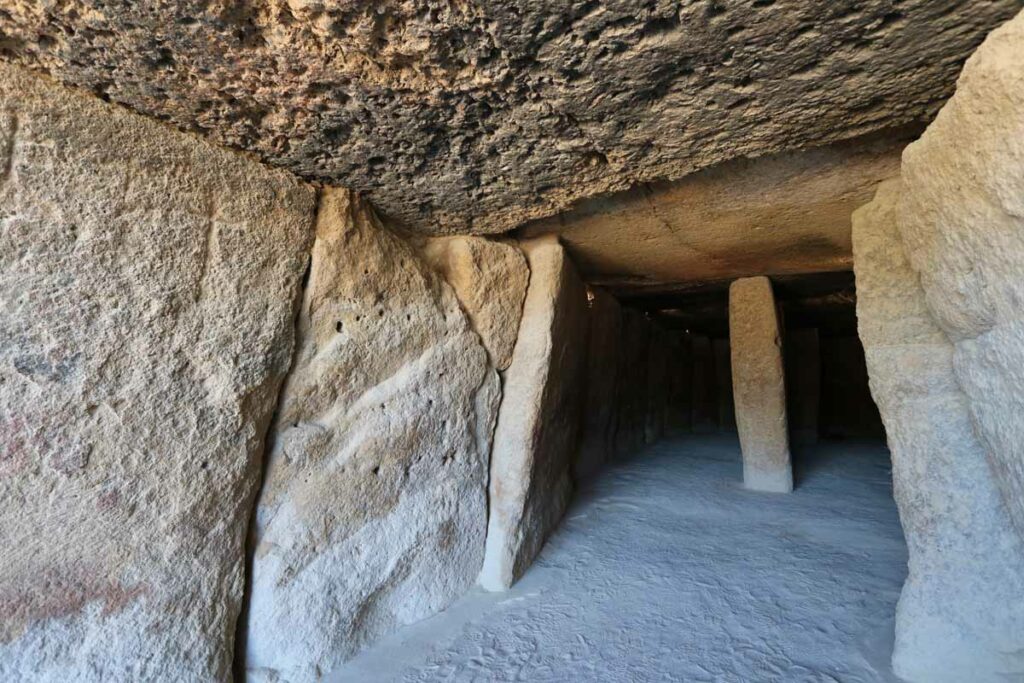
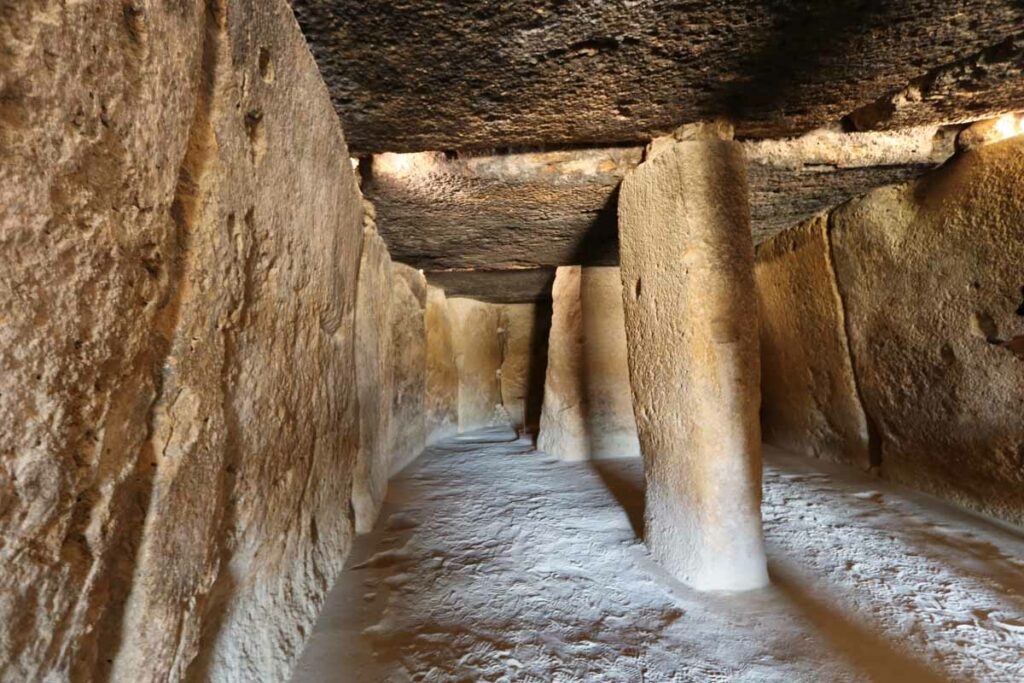
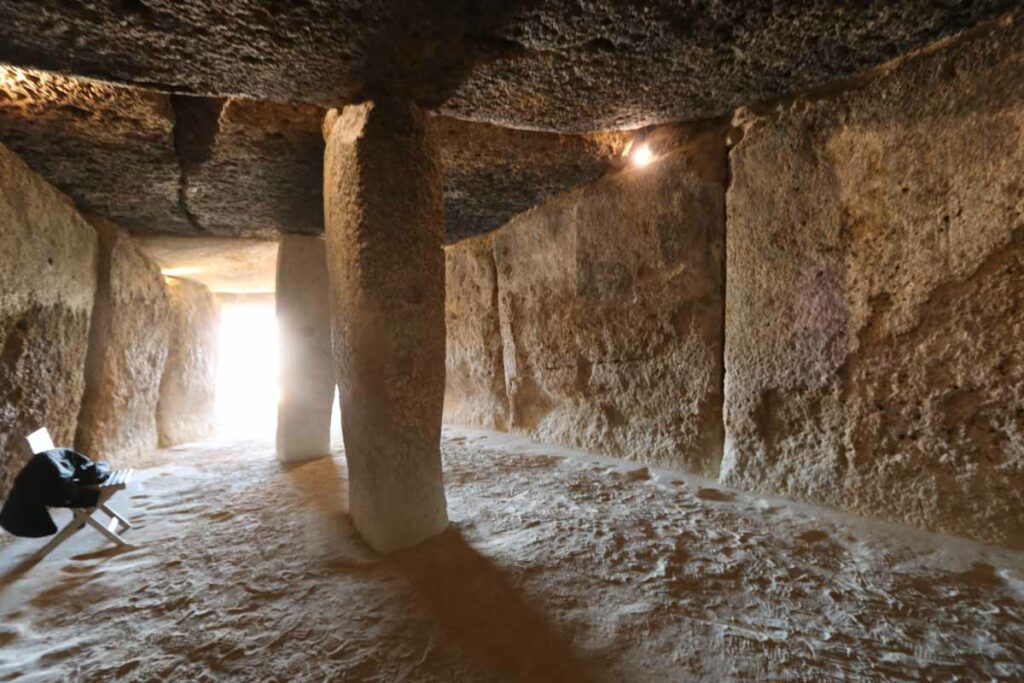
One of the unusual features of Menga is a deep well shaft at the end of the chamber. It’s almost 20 meters deep and 1.5 meter wide. But little is known about it, it may have been constructed after the initial construction of the dolmen.

I’ve mention before the ‘anomalous orientation’ of Menga – its entry faces directly the Peña de los Enamorades, the man-looking mountain that rises out of the nearby plains.

The structure of the dolmen is covered with about 50 meters of soil and stones which grew into the natural looking mound that you see today.
Viera Dolmen
Just a few minutes walk from Menga is Viera Dolmen. It is thought to have been built between 3510 – 3020 BC.
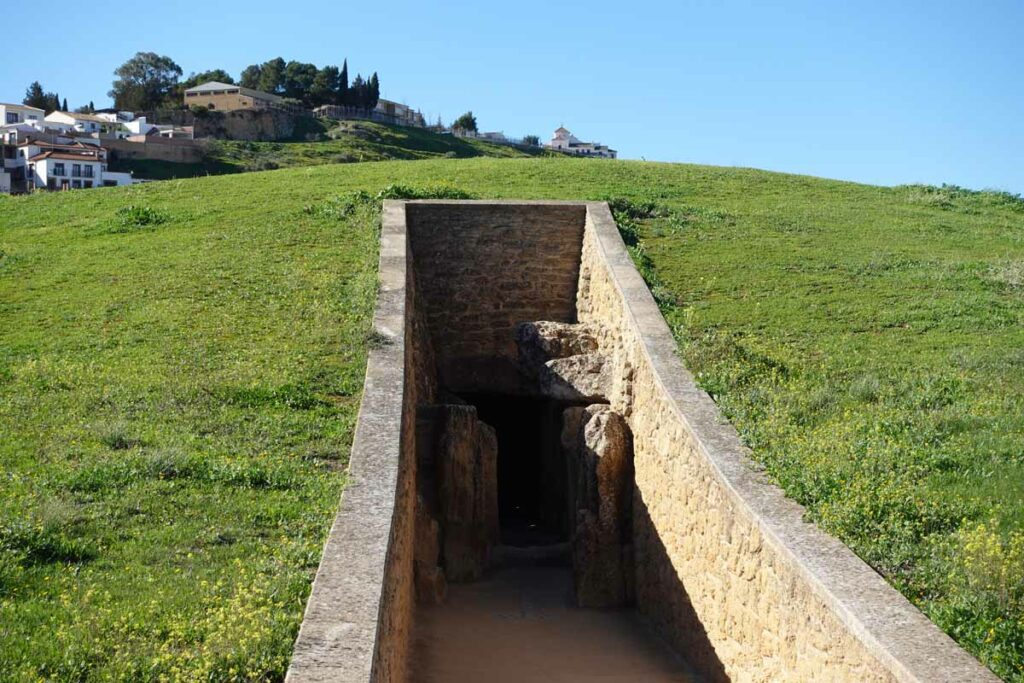
It is a much smaller dolmen with a long corridor leading to what was thought to be a burial chamber (although no bones were found). Just like Menga, the dolmen is made up of huge slabs of rocks.
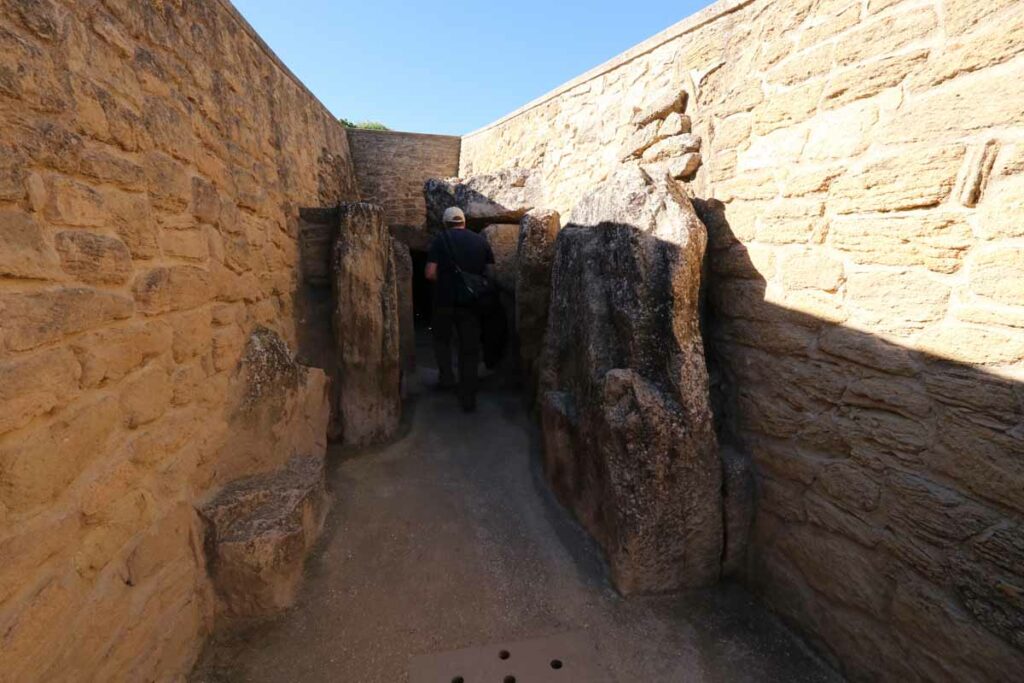
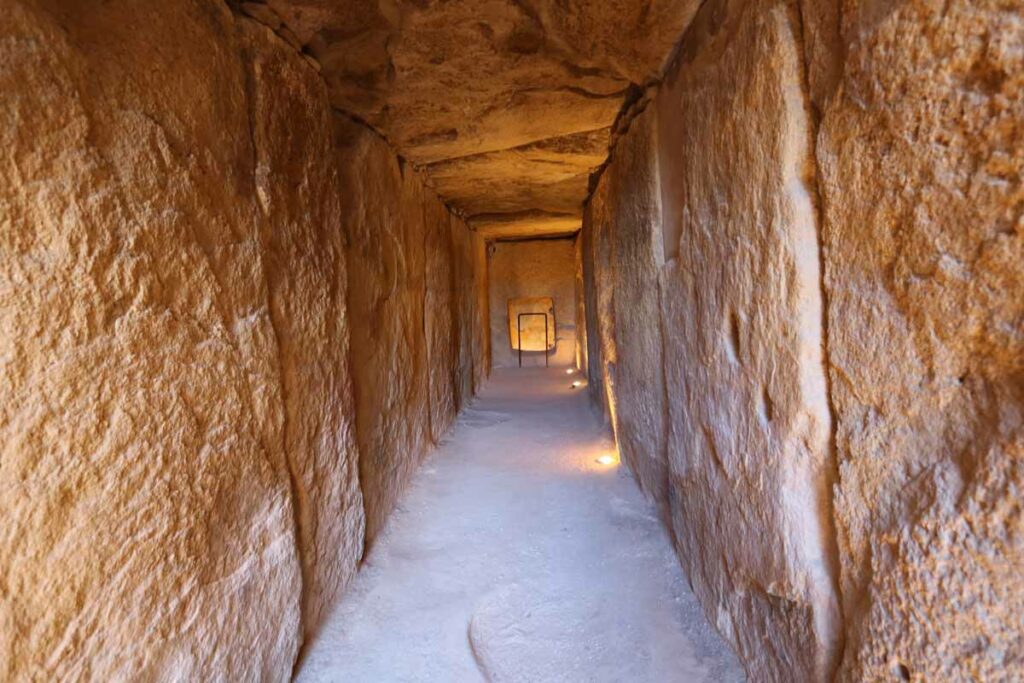
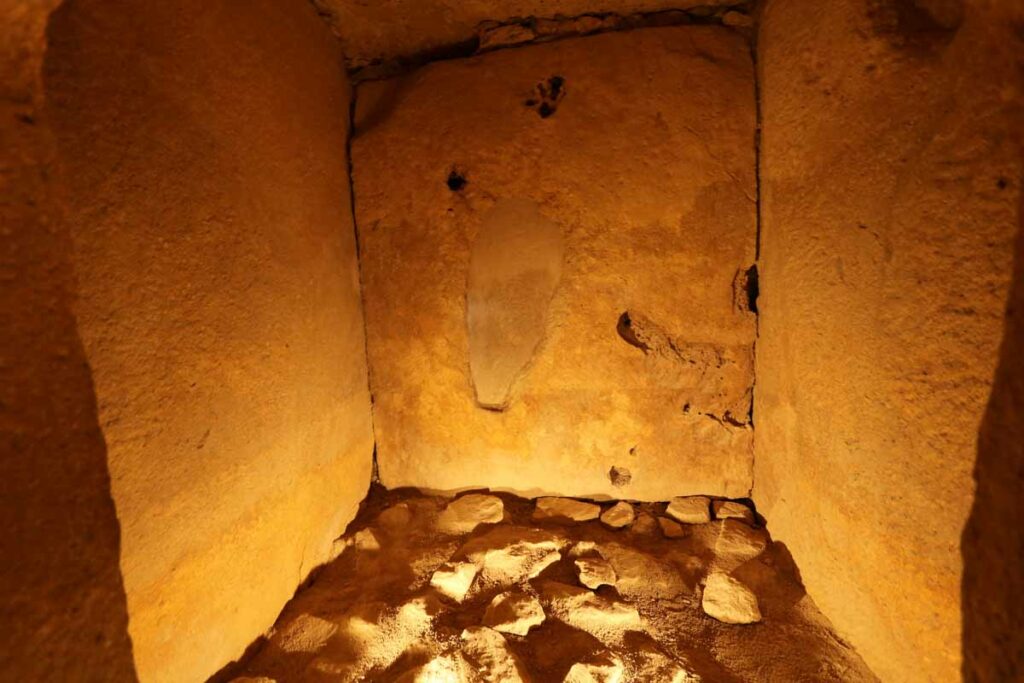
Viera is oriented like traditional dolmens – facing the rising sun so that light would shine into the burial chamber.
Tholos de El Romeral
I’ve mention above that El Romeral is a few kilometers away and can only be reached by taxi.
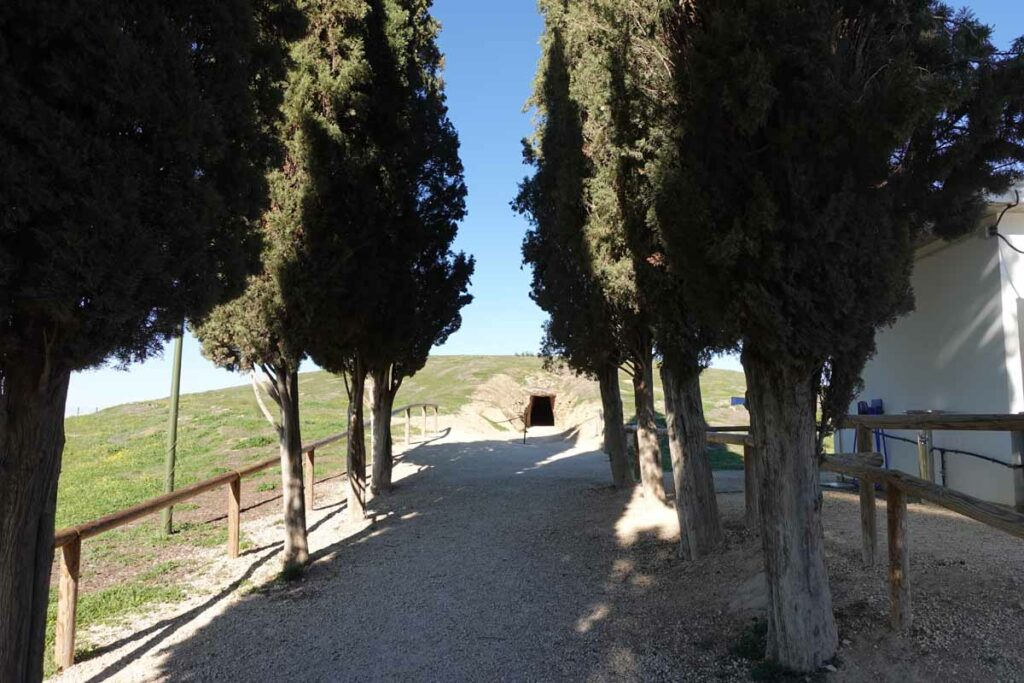
El Romeral is newer than Menga and Viera. It is thought to have been constructed around 1800 BC. It is also different: while the ceiling of the corridor is made up of large megalithic slabs, the walls are constructed of small stones. They lead to two round chambers, also made of small stones. These are capped by a solid slab at their tops.
Note: the term “Tholos” refers to the shape of the tomb and is otherwise called a “beehive” tomb.
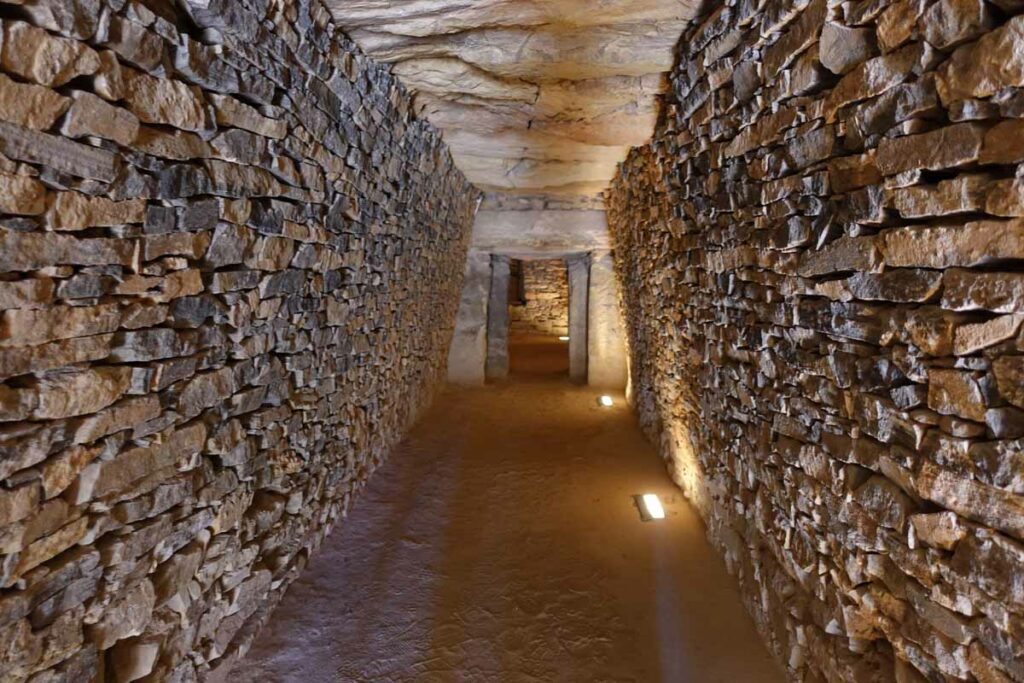
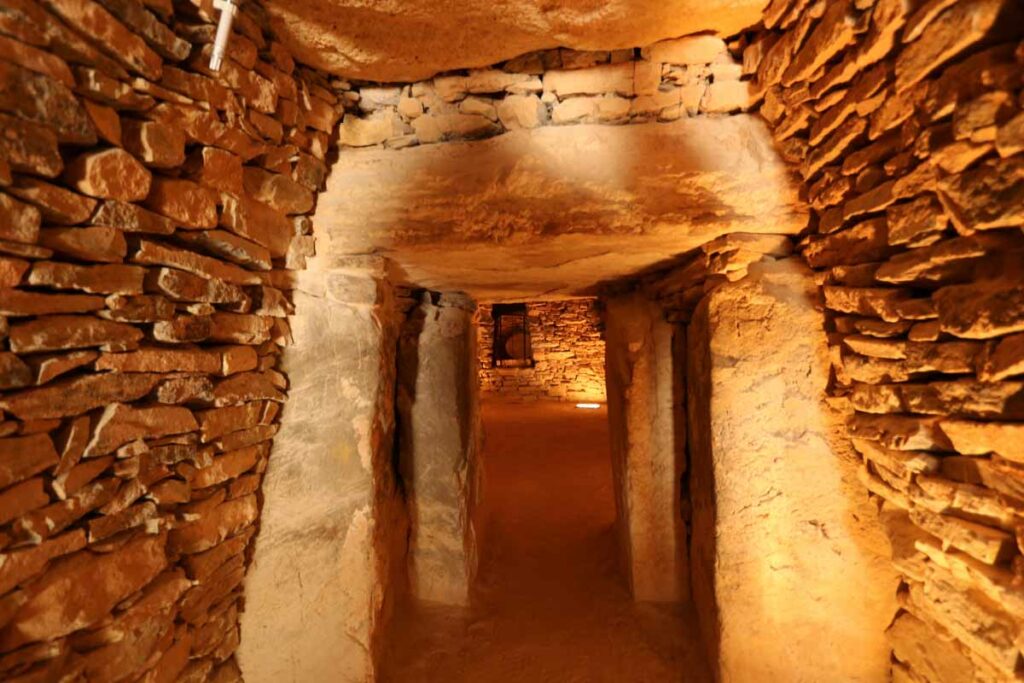
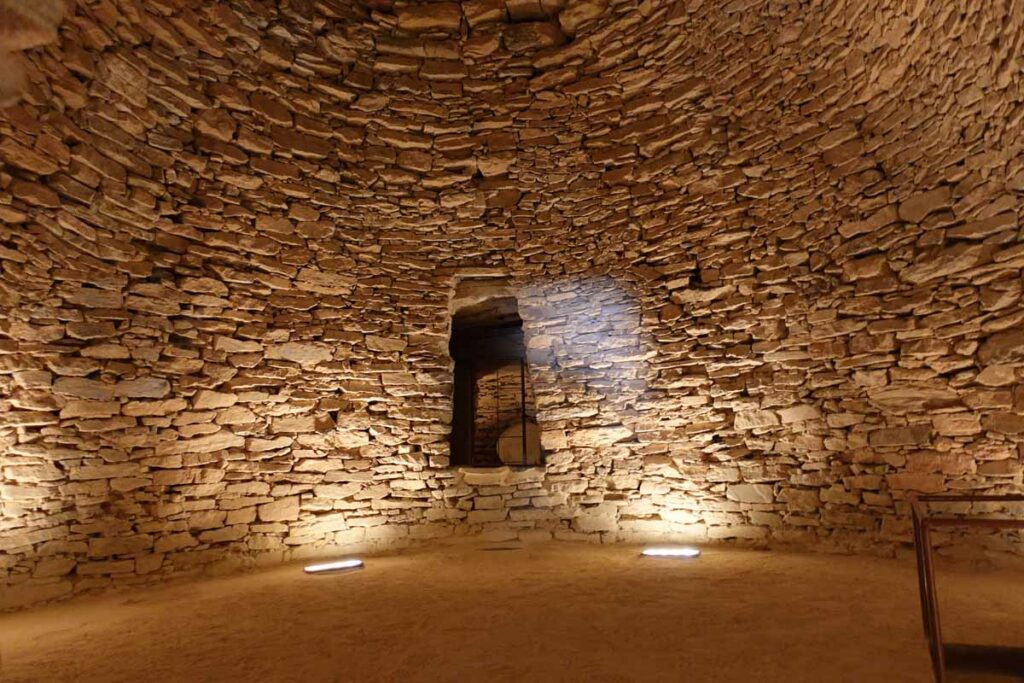
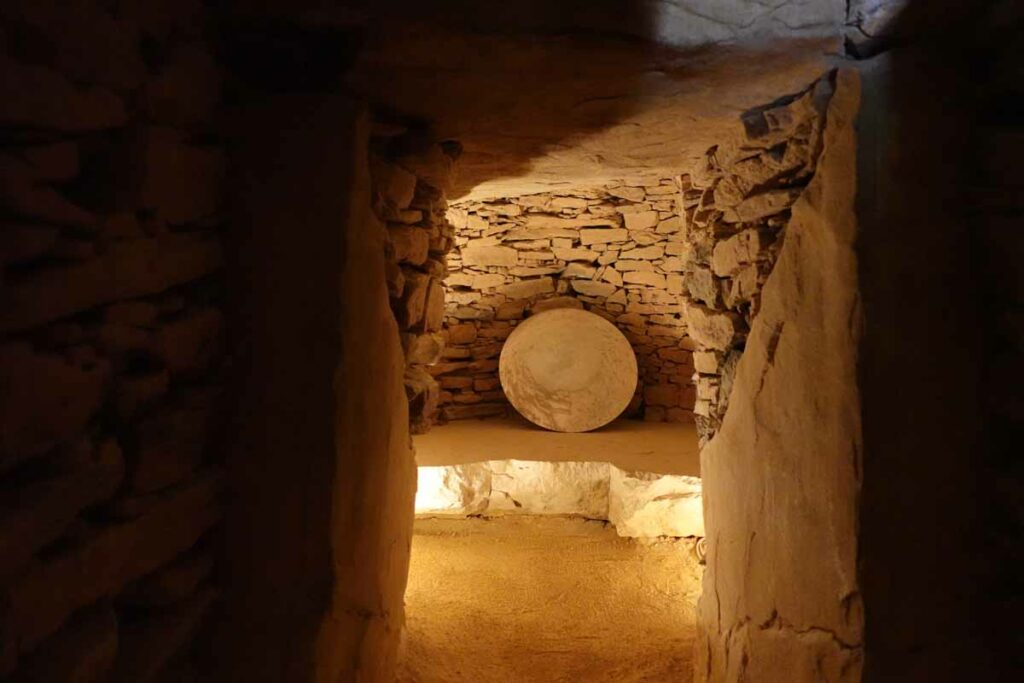
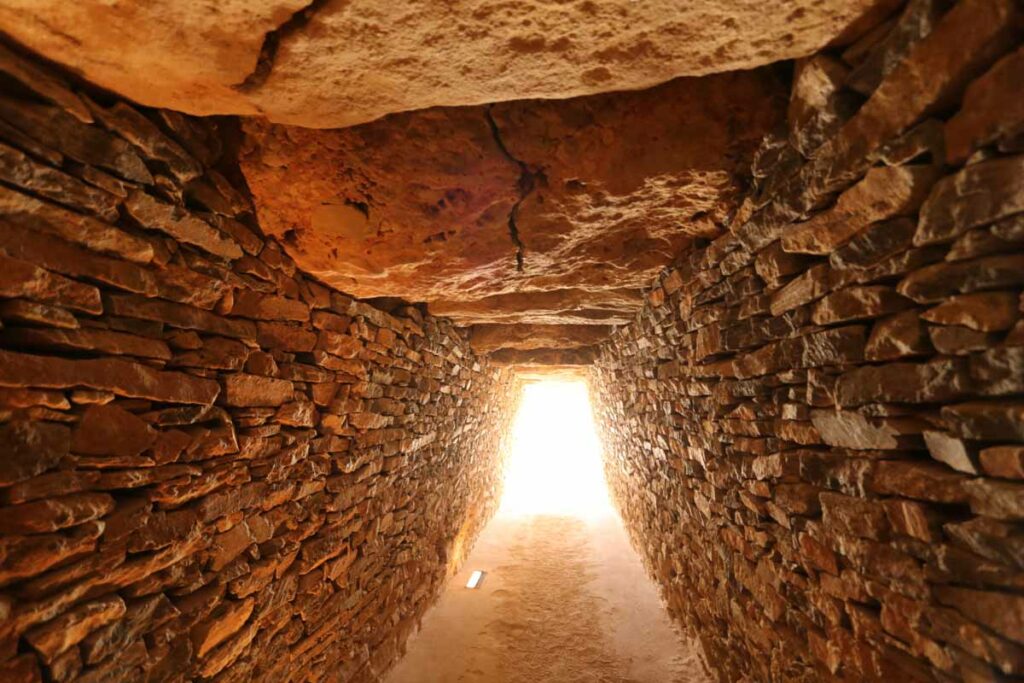
Like Menga, El Romeral does not face the rising sun: it actually faces westwards towards the highest peak of the Sierra of El Torcal.
Note: As mentioned, many people don’t bother coming to El Romeral. It really impressed us and I recommend organizing yourself to come here.
Additional Practical Information
How to get to Antequera: Antequera’s AV station is close to the center. If coming from Malaga it takes 25 minutes by train. From the train station you can get to the main dolmens site in about 20 minutes walking. See Renfe schedules, there are usually 3 Avant trains/day.
By bus: There are usually 10 buses/day from/to Malaga which take an hour. See Alsa for schedule.
Note: Antequera is a beautiful city. People often regret not staying longer. There’s lots to see: the Alcazaba (the Moorish fortress overlooking Antequera), lots of churches, some great viewpoints. It makes for a great base to visit El Torcal de Antequera as well as Caminito Del Rey. If staying a night or two we always recommend Hotel Manzanito across from Parroquia San Sebastián.
More: The Best Hotels in Antequera
Related: 30 Photos that will make you want to visit Antequera (Spain)
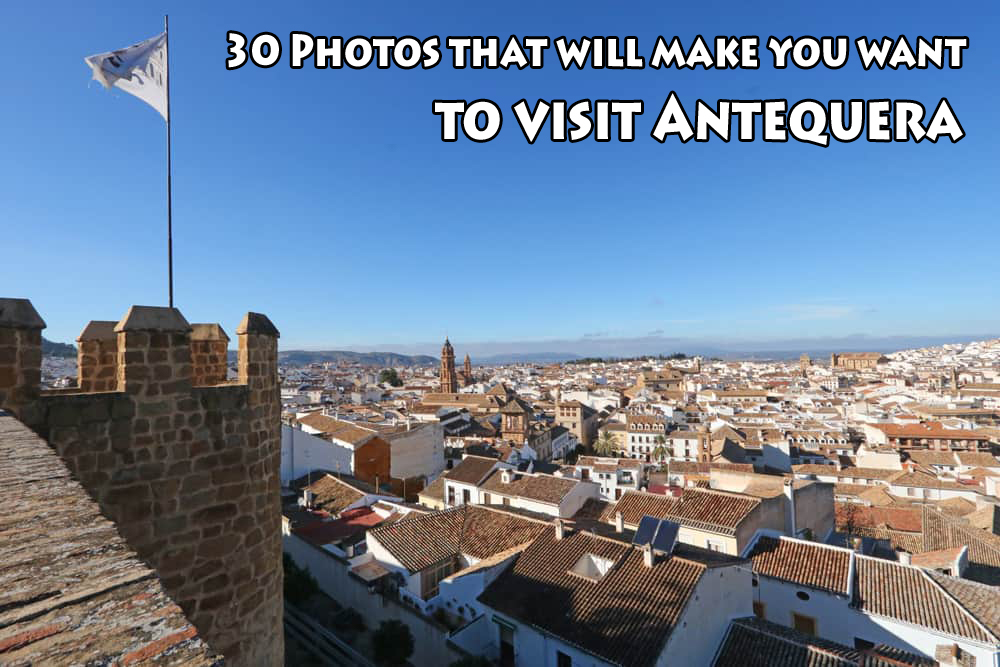
Related: Hiking El Torcal de Antequera
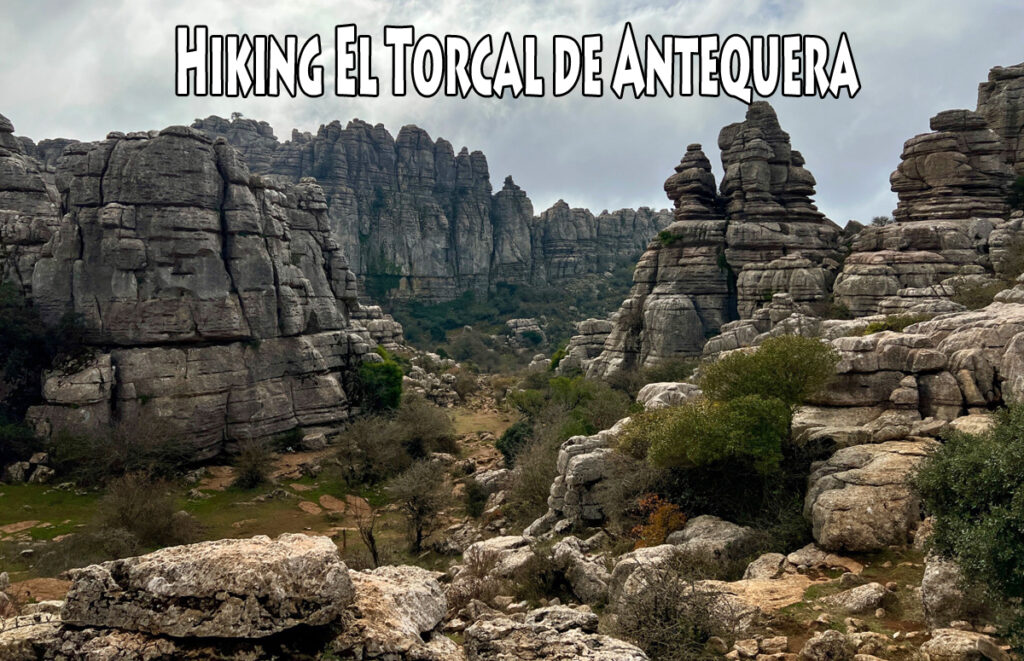
Related: The Alcazaba of Antequera
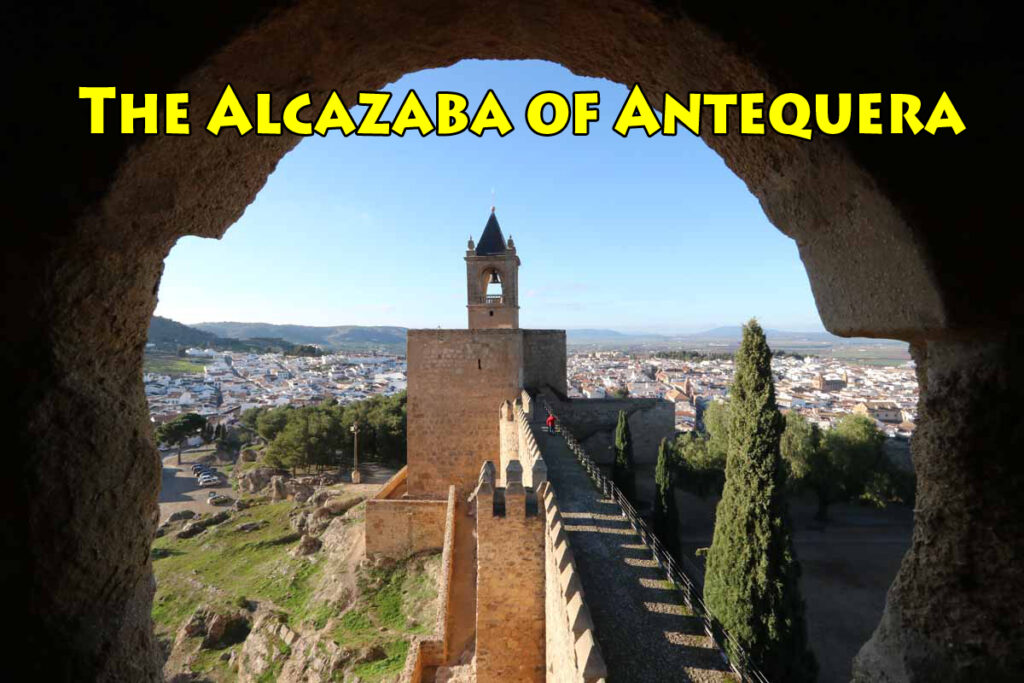

Hi there. When I am looking at the Alsa bus website, there don’t seem to be any connections between Málaga (city) and Antequera. The nearest I can find is Salinas. Do you have an idea, maybe, what I’m doing wrong?
You are right! They recently changed the bus system there, Antequera is now considered part of greater Malaga and is part of the city bus network. I just looked it up here. Good luck!
Brilliant! Thank you so much for solving it for me. I am going to Málaga and Granada next month, and really fancy visiting Antequera for the day (especially after finding your blog!) I was really struggling to find a good way to do it by public transport, and the option you have found didn’t come up. I really appreciate your response (and all the information here too!) 🙂
My pleasure!